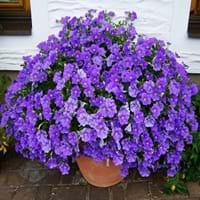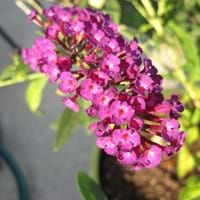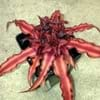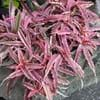Life Span
Annual
Perennial
Type
Tender Perennial
Flowering Plants, Shrubs
Origin
North America, Mexico, Central America, South America
Africa, America, Asia
Types
Not Available
Lockinch, Petite Indigo, White Profusion
Number of Varieties
Not Available
Habitat
Depression on prairies, Moist Ditches
Along Railroads, River side, Roadsides
USDA Hardiness Zone
9-11
5-10
Sunset Zone
8, 9, 14, 15, 16, 17, 18, 19, 20, 21, 22, 23, 24
H1, 2a, 2b, 3a, 3b, 4, 5, 6, 7, 8, 9, 10, 11, 12, 13, 14, 15, 16, 17, 18, 19, 20, 21, 22, 23, 24
Habit
Not Available
Arching/Fountain-shaped
Flower Color
White, Yellow, Red, Blue, Purple, Orange, Pink
Blue, Pink, Purple, Red, White
Flower Color Modifier
Bicolor
Not Available
Fruit Color
Not Available
Not Available
Leaf Color in Spring
Green, Gray Green
Gray Green
Leaf Color in Summer
Green, Gray Green
Gray Green, Light Green
Leaf Color in Fall
Green, Gray Green
Gray Green, Light Green, Yellow green
Leaf Color in Winter
Light Green
Not Available
Leaf Shape
Oblong
Egg-shaped
Plant Season
Spring, Summer, Fall, Winter
Fall, Spring, Summer, Winter
Sunlight
Full Sun, Partial Sun
Full Sun, Part sun, Partial shade
Type of Soil
Loam, Sand
Loamy, Sandy, Well drained
The pH of Soil
Acidic, Neutral
Neutral, Slightly Acidic, Slightly Alkaline
Soil Drainage
Well drained
Well drained
Bloom Time
Indeterminate
Spring
Repeat Bloomer
Not Available
Yes
Tolerances
Drought
Drought, Pollution, Salt, Soil Compaction
Where to Plant?
Container, Ground, Pot
Ground, Pot
How to Plant?
Seedlings, Stem Planting, Transplanting
Seedlings, Stem Planting, Transplanting
Plant Maintenance
Medium
Medium
Watering Requirements
Keep the ground moist but not water-logged, Requires regular watering, Requires watering in the growing season
Form a Soil ring to water efficiently, Water Deeply, Water twice a day in the initial period
In Summer
Lots of watering
Lots of watering
In Spring
Moderate
Moderate
In Winter
Average Water
Average Water
Soil pH
Acidic, Neutral
Neutral, Slightly Acidic, Slightly Alkaline
Soil Type
Loam, Sand
Loamy, Sandy, Well drained
Soil Drainage Capacity
Well drained
Well drained
Sun Exposure
Full Sun, Partial Sun
Full Sun, Part sun, Partial shade
Pruning
Prune to stimulate growth
Cut or pinch the stems, Prune for shortening long shoots, Prune if you want to improve plant shape, Prune ocassionally, Remove damaged leaves, Remove dead or diseased plant parts, Remove deadheads, Remove shoots
Fertilizers
All-Purpose Liquid Fertilizer
All-Purpose Liquid Fertilizer
Pests and Diseases
Red blotch
Downy mildew, Leaf spot, Spider mites
Plant Tolerance
Drought
Drought
Flower Petal Number
Single, Double, Semi-Double
Single
Foliage Texture
Medium
Medium
Foliage Sheen
Matte
Matte
Attracts
White bugs
Butterflies, Hummingbirds
Allergy
Not Available
Vomiting
Aesthetic Uses
Beautification, Bouquets, Landscape Designing, Showy Purposes, Used for decorating walls, fences, gates, hedges, etc.
Showy Purposes
Beauty Benefits
Not Available
Not Available
Environmental Uses
Air purification
Air purification
Medicinal Uses
Not Available
Not Available
Part of Plant Used
Flowers
Flowers, Leaves
Other Uses
Decoration Purposes, Showy Purposes, Used as Ornamental plant
Showy Purposes, Used as Ornamental plant
Used As Indoor Plant
Yes
No
Used As Outdoor Plant
Yes
Yes
Garden Design
Bedding Plant, Container, Hanging Basket, Houseplant, Mixed Border, Rock Garden / Wall, Tropical
Edging, Feature Plant, Foundation
Botanical Name
CALIBRACHOA
Buddleia davidii
Common Name
Calibrachoa, Million Bells
Butterfly Bush, Summer Lilac, Butterflybush
In Hindi
Calibrachoa
Butterfly Bush
In German
Calibrachoa
Schmetterlingsstrauch
In French
Calibrachoa
buisson de papillon
In Spanish
Calibrachoa
arbusto de las mariposas
In Greek
Calibrachoa
Butterfly Μπους
In Portuguese
Calibrachoa
arbusto de borboleta
In Polish
Calibrachoa
Butterfly Bush
In Latin
Calibrachoa
papilio rubo
Phylum
Tracheophyta
Spermatophyta
Class
Magnoliopsida
Dicotyledonae
Family
Solanaceae
Scrophulariaceae
Genus
Calibrachoa
Buddleja
Clade
Angiosperms, Eudicots
Angiosperms, Asterids, Eudicots
Tribe
Not Available
Not Available
Subfamily
Petunioideae
Not Available





